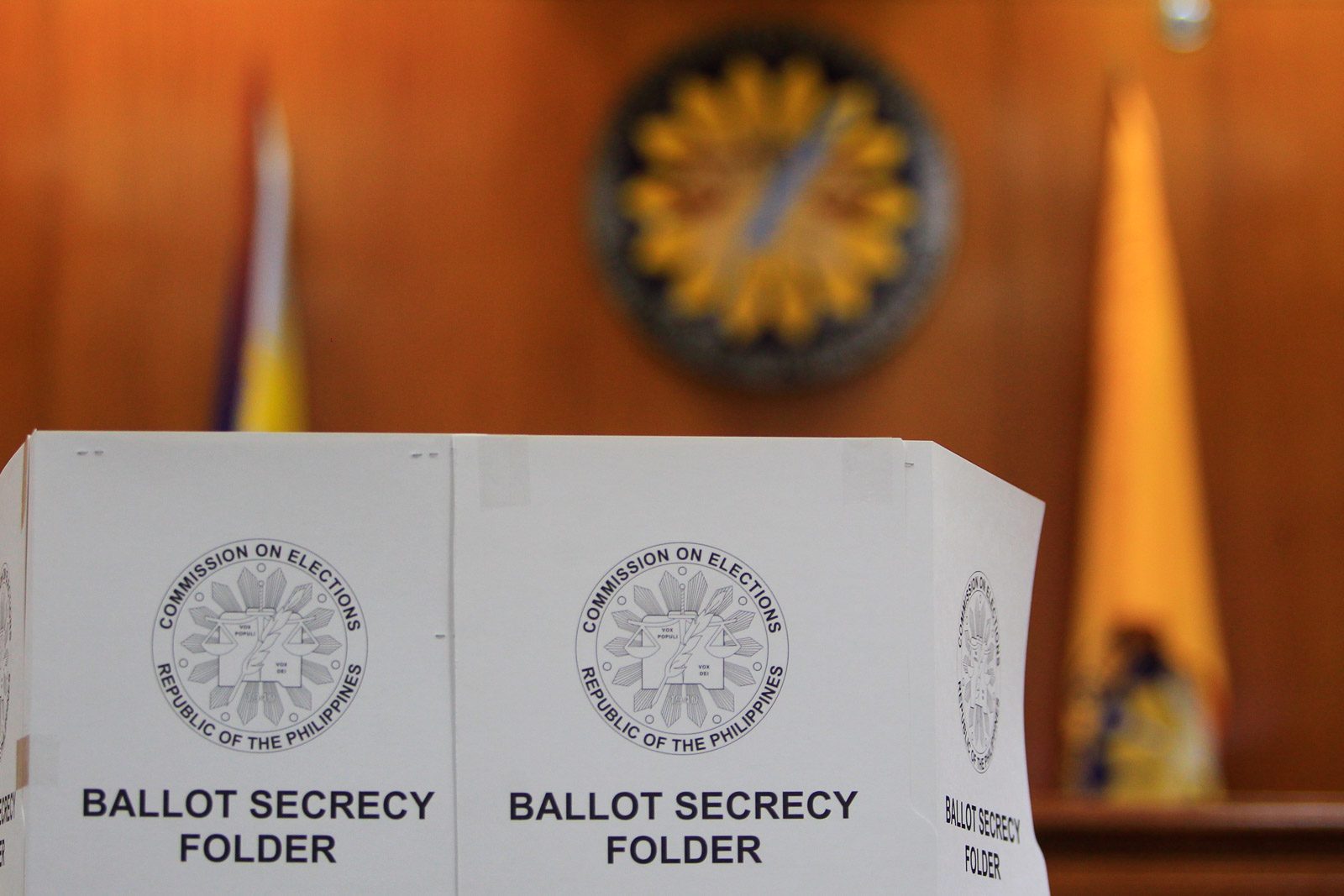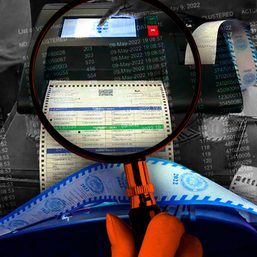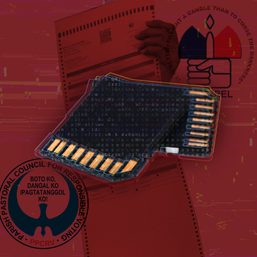SUMMARY
This is AI generated summarization, which may have errors. For context, always refer to the full article.


MANILA, Phillippines – It’s election day on Monday, May 9, when some 65.7 million Filipinos will have their say on who will lead the Philippines for the next six years.
Because of the pandemic, some voting rules have changed in 2022, making this election unlike any that had come before it. Still, following minimum health protocols and preparing for the day itself can help make sure your ballot gets counted.
The May 2022 elections will only be the second time the Philippines has held an election excise during the pandemic. First was the Palawan plebiscite in March 2021.
Don’t forget, you get only one ballot and one chance to vote. Here’s a brief guide on what to expect and how to prepare to vote on May 9, based on guidelines released by the Commission on Elections (Comelec) and advice from election lawyer Emil Marañon.
Before heading out to vote
Some quick reminders: Across the country, polls will open at 6 am, and election workers will accommodate voters up to 7 pm. The Comelec extended voting hours this year to accommodate lines that are expected to form due to social distancing measures in place due to the health crisis.
Double-check and familiarize yourself with the location of your polling precinct, or where you will cast your vote. You can check that here. (If you face any issue with the Comelec’s online precinct finder, here’s a quick guide on what do next.)
Preparing for the day: Prepare a list of who you will vote for to avoid making accidental markings on ballots, which may be read by vote-counting machines. Expect that lines can get long. If there are still voters outside the polling place at 7 pm, the Comelec said voting would continue.
“It will continue until such time all those inside or within 30 meters will be catered,” Commissioner Marlon Casquejo told lawmakers at the House of Representatives in November 2021.
Don’t forget to bring the following items with you:
- Pen (to sign the election day computerized voters list [EDCVL])
- Face mask
- Face shield (if voting in an area under Alert Level 4)
You will not need to present a COVID-19 vaccination card or a negative COVID-19 test result to vote.
Take note: You can bring your list of who to vote for, but remember you cannot bring campaign materials.
At the polling place
There will be a single entry point in polling places to ensure that health protocols are observed among voters. You can expect the following to take place:
STEP 1: Temperature check
The Comelec has asserted that minimum health standards must be followed, and that it will observe measures such as temperature checks and the submission of COVID-19 health declaration forms.
Upon taking one’s temperature:
- If 37.4°C and below – Voter can go ahead and vote.
- If 37.5°C and up – Voter will be asked to rest for a few minutes before checking again.
- If 37.4°C after rechecking – Okay to go ahead
- If still 37.5°C and up – Voting will be done in an isolated polling precinct to avoid potentially exposing other voters. In this situation, Marañon said the voter is presumed to have COVID-19 and so will need to be separated and assisted by election workers wearing the proper personal protective equipment.
It’s important to take note that if a voter may be suspected of having COVID-19 or is positive, he or she still has the right to vote. “The right to vote is a guaranteed right under the Constitution. So even if you are positive, you still have the right to vote,” Marañon said in a mix of English and Filipino during a recent episode of Rappler’s Ask Your Election Lawyer.
STEP 2: Identification
After you pass the temperature check, head to the voter’s assistance desk and give your name. You will then get directions to your specific polling precinct, or the room you’ll be voting in.
STEP 3: Get your ballot
Outside your precinct, look for your name in the posted computerized voters list. Approach any member of the electoral board or its support staff and state your name, precinct number, and other pertinent details asked.
At this point, your identity as a voter will be established. You do not need an identification card to vote, but Marañon advised to have one valid ID ready, in case the member of the electoral board will need it to establish your identity.
After this, the election worker on duty will say in a voice loud enough to be heard in the room that you will be voting. This is done to give any poll watcher the chance to object to your voting. After this, you’ll sign the EDCVL and receive your ballot.
Do not accept a ballot with tears, marks, or shades. Inspect the ballot carefully at the desk of electoral board because after you leave, any marks found will be presumed to be yours.
What if a crowd starts to form? The Comelec earlier decided it would be more feasible if there was no cap on the number of people allowed in a polling place at a specific time. But to prevent overcrowding, the electoral board has the authority to decrease the number of voters casting their ballots simultaneously inside the room if the headcount exceeds 50% of the place’s capacity.
In this case, a holding area can be set up next to the polling precinct, where voters will await their turn. Voters will be arranged on a first-come, first-served basis. The Comelec said giving numbers to voters to determine their sequence is “strictly prohibited.”
Voting
Step 4: Fill up your ballot
Ballots are divided by positions up for election: president, vice president, senator, House of Representatives member, governor, vice governor, provincial board members, mayor, vice mayor, councilors, and party list.
Vote only for the number of seats indicated per position:
- President – Vote for a maximum of 1 candidate
- Vice president – Vote for a maximum of 1 candidate
- Senator – Vote for a maximum of 12 candidates
- House of Representatives – Vote for a maximum of 1 candidate
- Governor – Vote for a maximum of 1 candidate
- Vice governor – Vote for a maximum of 1 candidate
- Board member – The number of seats per district varies.
- Mayor – Vote for a maximum of 1 candidate
- Vice mayor – Vote for a maximum of 1 candidate
- Councilor – The number of seats per municipality or city or district varies.
- Party-list – Vote for a maximum of 1 group
Take note, you cannot vote for more candidates than the number indicated beside each position as this can invalidate your vote. For example, if you vote for 13 senators, when there are only 12 seats available, the rest of your votes in the senatorial contest will be considered invalid. You can undervote, or abstain from choosing the maximum number of candidates.
The Comelec will provide marking pens to shade ballots. Refrain from placing extra markings on your ballot. Fully shade the entire oval beside a candidate’s name to make sure it is counted by the vote counting machine (VCM). Don’t make an x-mark, check, or half-shade.
Do not take a picture of your ballot. This is an election offense.
Step 5: Cast your ballot
After filling out your ballot, keep it inside the ballot secrecy folder. Bring this to the VCM and insert it into the machine.
Do not leave right away. Wait for the machine to process your ballot. Once this is done, a poll clerk will mark your finger with indelible ink and will give you your voting receipt to review.
Check your voting receipt to see if it correctly reflects who you voted for, then put it in the designated box. If the receipt does not match who you voted for, bring it to the board of election inspectors to register your complaint. This will then be put on record.
Once done, you’ve officially voted! – Rappler.com
Read Rappler’s other election guides: #PHVote Guides for the 2022 Philippine elections.
Add a comment
How does this make you feel?






There are no comments yet. Add your comment to start the conversation.